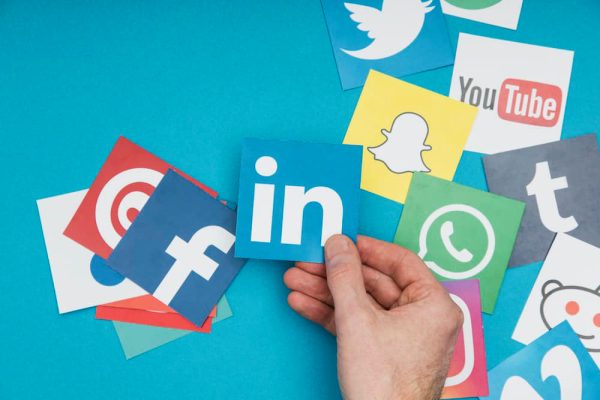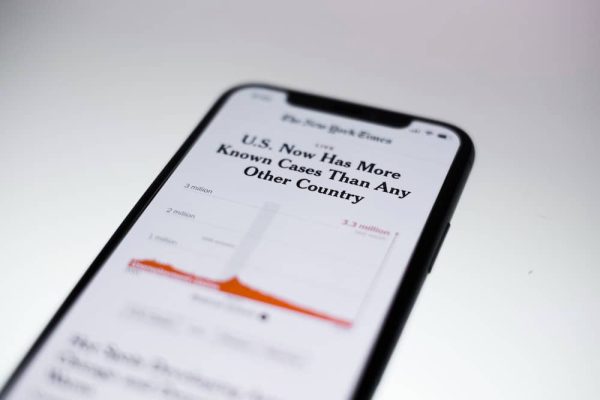https://nasacademy.com/blog/article/the-power-of-social-media-is-it-being-used-or-abused

In the past five years, social media has become a dominant and growing source of news and information for millions of people around the globe. It’s fast, it’s free, and it’s always with you in your pocket (courtesy your phone). But the power of social media hasn’t just changed the way we consume news – it’s also changed the way we create it.
So…how exactly have traditional media outlets, journalism, and the news industry been affected due to the rise of social media? Let’s take a look.
In the past, news traveled fast, but today, social media ensures that news travels at the speed of light. Thanks to the accessibility and speed of platforms like Twitter, Facebook, and Instagram, the old practice of submitting a story for the morning news is dead. Traditionally, when news broke, journalists would rush to cover it, file it, send it to their editor, wait for approvals, and then publish it. Social media, on the other hand, publishes a story at the click of a button. There is no middle man, no approvals needed, and no delay in how information is shared.

However, it’s not all black and white. Both social media and journalism rely on each other to grow. For example, journalists today can use the power of social media to build their reputation, interact with readers, share their unfiltered thoughts, and amass a following that can travel with them from one job to the next. The downside, though, is that using social media to share stories and build an audience can sometimes mean people move too fast, and then make mistakes, or worse – report carelessly. The race to be first is real, and moving fast doesn’t always allow you to get things right.
Digital journalism is heavily dependent on advertising, and getting as many people to click on your content as possible. Social platforms, like Facebook, can be major traffic drivers for traditional publications looking for free online distribution. The distribution power of social platforms like Facebook means that publishers are not only changing the types of content they create (for example, introducing more videos into their reporting), but they’re also changing where that content lives online. Social media isn’t dictating what journalists consider news, but it is changing where we find that news, and in what form it is delivered.
Today, the power of social media has given journalists the chance to build a public profile that would have been extremely difficult to do, say, ten years ago. Platforms like Twitter and Facebook allow journalists to weigh in on topics as they unfold, and the virality of social media means those comments can reach a wider audience well outside of one industry or geography. For journalists, having a social profile allows their readers to put a face to a name and cheer them on, on a more personal level. News is slowly becoming more about the individual, and the person telling you the story, rather than just being about the story itself.
While traditional media generally reaches a wider range of audience members and is generally unbiased, the power of sharing news on social media allows you to target specific demographics.
It gives you the opportunity to reach a niche target audience with your story more successful – all while still being accessible to others. Social media gives users the opportunity to really target their messages, selecting everything from the demographics and geography of an audience, to the time of day the post will go live. Meanwhile on TV, there aren’t any guides to help you reach a specific audience.

Traditional media tends to have a longer timeline before it reaches audiences compared to social media. It takes longer to put together a story on TV, and has a lengthier process to get it from story to screen – meanwhile, social media posts can be uploaded as quicker, shorter versions of a story and doesn’t have to go through as many hurdles to make it to people’s feeds.
Some people are of the opinion that social media has killed journalism. However, if you look closely, social media is merely journalism from different, microscopic points of view.
If information is being shared to inform people with the ultimate goal of making a more informed, better society, this means that this information needs to actually inspire the people to want to see that change – and inspire them to be a part of it.
Simply making information available is not enough for the world today. People don’t just want to listen, they want to act. They want to find inspiration, and build a community to see real change happen – and this comes through allowing personal expression, and individual connection. This shift, also known as the social media revolution, is not the death of journalism; it’s the birth of a democratic movement that emphasizes some of journalism’s key factors: transparency, honesty, and giving a voice to the voiceless.
Many traditional and non-traditional media outlets comment on how social media has seriously affected news organizations and how they operate – for example, the fall of newspaper consumption. However, the power of social media has actually revolutionized journalism by ensuring journalists perform their jobs in a way that people continue turning to them for news. How? Journalists now have uninterrupted access to their audience, putting them closer than ever to the content and stories that their readers and listeners care about.

Audiences are no longer wanting to turn on a news channel and wait for a news anchor to tell them the latest stories from around the world. They’re on Twitter or Facebook, sifting through content and sharing stories – sometimes even before a journalist has picked it up.
This doesn’t mean social media isn’t harmful or is immune to negativity. Like everything else, there are two sides to social media as well. While some admire social media for its innovation and power to do good, others may view it as a “troll tool” that is just spreading hate and misinformation. Ultimately, this will depend on an individual’s perspective and how they use the platform.
Some incredible examples of social media’s power, is how it helps people come together to create awareness, support a worthy cause, respond quickly to crisis, and it’s ultimate power of connecting people from all around the world.
Social networking allows us to make new friends with like-minded people across the globe – as well as join groups, create new communities, and seek out support. Today, the Internet is home to a huge number of support groups, where people can find an online community who understands them and their situation, as well as who offers them practical and emotional support.
In fact, for many, social media can be a lifeline. By connecting people with similar experiences, and providing access to information and support, the online world has a significant role to play in increasing awareness about social and civic issues, as well as normalizing parts of being human that are often stigmatized – like struggling with mental health.
It’s become a hugely effective tool in creating social change, and making people feel like they are informed and connected, compared to traditional journalism where you just received facts. Now, with the power of social media, you receive connection, emotion, and hope.
In the past, only powerful people have been in control of the flow of information – but now, people around the globe are dictating what people see and hear on a daily basis.
People are increasingly getting their news through social media, and the creators and influencers they follow. This has led to many independent news outlets shutting down, and the news industry in general, is in a state of economic collapse. Today, social media content creators have a major responsibility in determining what a quarter of the earth’s population is talking about and ignoring, and they are taking that role away from traditional media.
Content creators are using their platform to share their opinions and amplify other people’s voices without being restricted or censored. By broadcasting their daily lives, expressing their most intimate, personal, and sensitive beliefs for the world to see, creators have shown that creating authentic content can build a more loyal audience, than simply marketing useless propaganda and facts.

Today, creators are empowering their audience to raise their voices instead of silencing them. They are inspiring people to take action and connect, rather than simply listen and follow. They are bringing down institutions and lifting up individuality – moving the world forward, and away from herd mentality.
But while this platform is decentralizing power in so many ways, it also is holding and dictating a completely new type of power that can’t be overlooked. Social media has created an entire industry in itself, capitalizing on people’s desire for the ideal life, and creating a constant pressure to be perfect. In a world where everyone is only showing life’s highlights, through carefully curated, perfectly filtered moments, so many people have fallen into pits of unhealthy comparison.
But as time goes on, we’re starting to see a massive shift surrounding this issue. Things are slowly reverting back to support the initial intent of what social media was made to do – bring people together. Now, creators are being held accountable. They are being called out for being ingenuine and unrealistic, and are applauded for authenticity and embracing imperfection.
Creators who are true to their values, who communicate openly and honestly, and who take responsibility for their actions, are the ones that succeed in building real connections, and loyal followings.
With the power of social media and communication today, people are more empowered than ever to make their voices heard – and consumers are actively influencing what the media produces.
The world has never been as informed as it is today, nor has there been such ready and easy access to the news. In general, communication in society has come a very long way. Massive technological changes over the past decade have created new opportunities for freedom of expression and information – and in some ways, has positively affected broadcast news as well.

The online world has given traditional media outlets cheaper opportunities to reach audiences, and a wider range of people to connect with.
Media organisations now disseminate information through a multitude of platforms in order to fulfill their audiences’ demands – meaning they’ve had to diversify how fast they deliver content and what formats they use. Not to mention, they’ve had to navigate a whole new landscape of average people competing against them, and sharing the same content.
This new trend of media distribution and the overlapping roles of content producer and consumer, now blurs the distinctions between traditional and social media – it’s no longer just a one-way communication system.
Most social media creators today embrace a tone of empowerment when communicating with their audience. Take for example, Nuseir Yassin, the man behind Nas Daily and Nas Academy, who has leveraged his platform to talk about the power of social media, and the issues that matter in the world.
He shares messages about empowerment, self-care, gender equality, world issues, politics – and he does it frequently, and in a language people will understand. This makes it easy for people to connect with him, understand him and truly learn how they can help make a difference. He uses social media to start discussions, and carry them across barriers, and into the real world.
Social media has done a quick job of changing a centuries-old profession, and these changes will continue to evolve. The reliance that individuals and businesses have placed on the use of social platforms has given social media far more power than we are often aware of, and it’s that power that will shape our society going forward.
5 years ago, the world had 5 million social media creators. Today, that number is over 50 million.
Welcome to the Creator Revolution. Now, for the first time ever, you can actually get a job doing what you love.
You can be a social media manager, a digital marketer on TikTok, or a community manager on Discord. Not only are these the world’s newest jobs, they are guaranteed to be in-demand in future. And they are way more fun than your average 9 to 5, and pay even better! But there hasn’t been one single place to learn all these skills. Until now.
This is the Creator Accelerator Program. We designed this program to help you skyrocket your career as a creator. From learning how to grow on social media platforms, to building a network and accessing job opportunities with the world’s top brands – this immersive program will transform your career in just 5 months.
By Team Nas Academy
By Admin Nas Academy